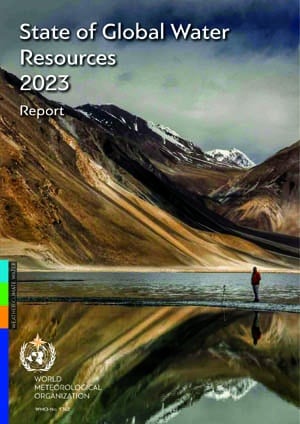
The year 2023 marked the driest year in over three decades for rivers around the world, according to a new report coordinated by the World Meteorological Organization (WMO).
The State of Global Water Resources 2023 report, released on October 7, highlights unprecedented stress on global water supplies, with five consecutive years of below-normal river flows and reservoir inflows. This shortage is affecting communities, agriculture, and ecosystems. In addition, glaciers experienced their largest mass loss in the last 50 years, with 2023 marking the second year of widespread ice loss globally.
Every region in the world where glaciers are present reported ice loss. The ice loss has produced more than 600 gigatonnes of water, much of which has ended up in the ocean as well as some riverways.
Meanwhile, 2023 was recorded as the hottest year on record, leading to elevated temperatures and widespread dry conditions, which contributed to prolonged droughts. WMO Secretary-General Celeste Saulo describes water as “the canary in the coalmine of climate change.”
“We receive distress signals in the form of increasingly extreme rainfall, floods and droughts which wreak heavy toll on lives, ecosystems and economies said. Freshwater resources face unprecedented stress, exacerbated by climate change and increasing demand. As a result of rising temperatures, the hydrological cycle has accelerated. It has also become more erratic and unpredictable, and we are facing growing problems of either too much or too little water.”
Now in its third year, this report is the most comprehensive, including new data on lakes, reservoirs, soil moisture, and glaciers. It aims to build a global dataset of hydrological variables to support early warning systems for water-related hazards by 2027. With 3.6 billion people currently facing water shortages, projected to exceed 5 billion by 2050, the report underscores the urgent need for action



